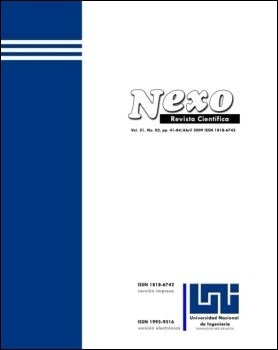Conservación de las raíces frescas de la yuca (Manihot esculenta Crantz) aplicándole el proceso de parafinado
DOI:
https://doi.org/10.5377/nexo.v21i2.874Keywords:
physiological deterioration post-harvest, morphological quality, culinary quality, microbial deterioration, physiological quality.Abstract
A characteristic of cassava root (Manihot esculenta Crantz) is the fast deterioration that occurs after harvesting, this process is called “Physiological Deterioration of Postharvest” (PDP). This study was made to determine the effect of waxing process in the conservation of the quality of the cassava root of cassava. This includes morphological quality, physiological quality, culinary quality and microbial deterioration.
The study tested the conservation of roots from different places at different periods of time using waxing technology at low cost. During twenty one days of study for each lot submitted for technology, show good levels of conservation of their characteristics physiological and culinary. The results lead us to consider waxing technology of cassava producers to increase the periods of commercialization.
Keywords: physiological deterioration post-harvest, morphological quality, culinary quality, microbial deterioration, physiological quality.
Downloads
2121
Downloads
Published
How to Cite
Issue
Section
License
The authors who publish in Nexo Scientific Journal agree to the following terms:
- Authors retain the copyright and grant the journal the right of the first publication under the license Creative Commons Attribution License, which allows others to share the work with a recognition of the authorship of the work and the initial publication in Nexo Scientific Journal.
- Authors may separately establish additional agreements for the non-exclusive distribution of the version of the work published in the journal (for example, in an institutional repository or a book), with the recognition of the initial publication in Nexo Scientific Journal.
- Authors are allowed and encouraged to disseminate their works electronically (for example, in institutional repositories or in their own website) before and during the submission process, as it can lead to productive exchanges, as well as earlier and greater citation of published works.










